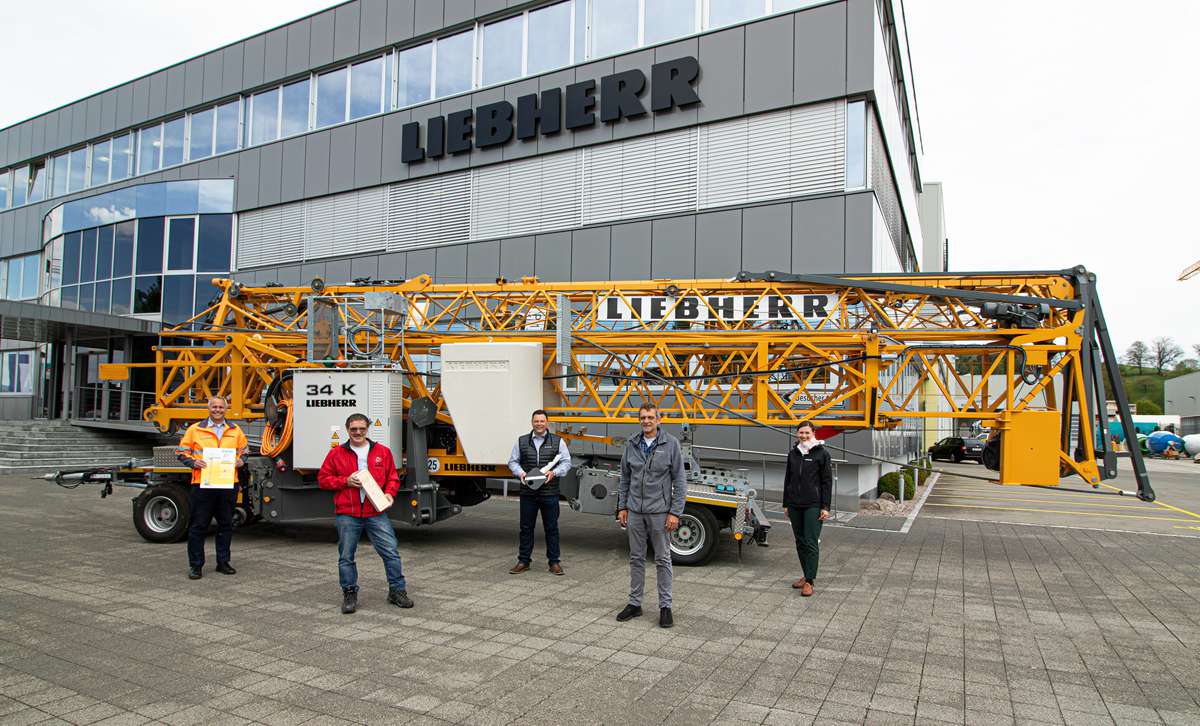Liebherr celebrates the sale of 2,000 34K fast-erecting cranes
Liebherr has sold its 2000th 34 K fast-erecting crane to Mathis Bau AG. The Swiss construction and transport company is a long-standing customer of the construction machinery manufacturer and already uses several Liebherr cranes in its diverse areas of operation.
Liebherr has a reason to celebrate: 2000 34 K fast-erecting cranes have left the production halls since its market launch in 1998. The milestone crane went to a Swiss customer. This is now the sixth Liebherr fast-erecting crane for the company Mathis Bau AG. The handover of the milestone crane took place at Liebherr-Baumaschinen AG in Reiden, Switzerland.
Company owner Daniel Mathis, who collected his new crane personally by truck, particularly appreciates the reliability of these cranes, “I need machines that I can trust and that’s why I opt for Liebherr; it’s a quality brand that allows me to offer my customers a first-class service.” Mathis Bau AG often undertakes work on construction sites in difficult-to-reach mountainous areas.
The crane has already completed its first job, which involved making full use of its four-tonne maximum lifting capacity. The crane lifted stair elements weighing almost four tonnes for a building extension in the Swiss municipality of Giswil, in the canton of Obwalden – a typical assignment for the Liebherr 34 K fast-erecting crane, which is mainly used for residential construction projects. Its impressive flexibility enables it to cover a broad spectrum of scenarios ranging from the construction of single-family homes and apartment buildings all the way to exclusive villas.
The crane can also be found working on the construction of commercial premises and infrastructure projects. With a hook height of up to 26 metres, it’s suited to projects with a building height of up to approx. 20 metres. A somewhat more unusual job for the 34 K involved working on one of the tallest buildings in the Benelux region.

Fun facts and special features of the 34 K
Fun fact: If all 2,000 Liebherr fast-erecting cranes were stacked on top of each other, it would create a hypothetical hook height of approx. 50 kilometres. This would reach into the outer stratosphere, way beyond where planes are able to fly and where only space rockets can go any higher. Or, to put it another way: it’s the same height as taking the six largest mountains in the world, and stacking the 8,000 metre-high giants on top of each other.
When the crane was first developed, it was ahead of its time and equipped with functions that are still in demand today. Its eleven different hook heights (12.7 m to 39.0 m) and three different jib lengths (25.5 m, 30 m, 33 m) give the 34 K great flexibility. They also make it possible to slew over other cranes on site and for the crane to be used close to adjacent buildings without problems arising.
In addition, the crane’s frequency converter technology enables sensitive, precise operation. Assembly engineers are pretty satisfied with the crane as well; as jib assembly takes place high above ground, it can be unfolded over the top of any potential obstacles. Because the crane is extremely compact to transport, it can be used on space-restricted construction sites and if things get too tight, e.g. when an archway is involved, the jib can be dismantled to address this.




















